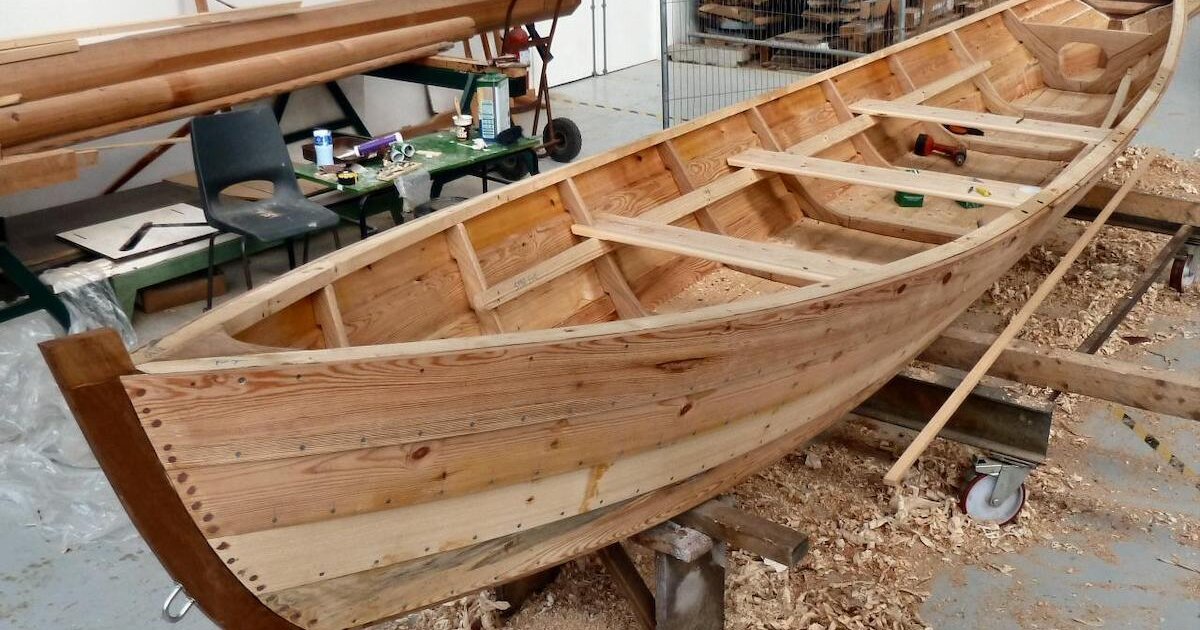
Small Boat Construction: How to Create Your Ideal Vessel
Building your own boat is an exciting and rewarding endeavor, allowing you to create a vessel perfectly tailored to your needs and dreams. Whether you envision a sleek sailboat gliding across tranquil waters or a sturdy dinghy for exploring hidden coves, constructing your own boat offers a unique sense of accomplishment. This comprehensive guide will equip you with the knowledge and tools to navigate the fascinating world of small boat construction, empowering you to build your ideal vessel.
Choosing the Right Boat Design
The first step in your boat building journey is selecting the right design. Consider your intended use, skill level, and available resources. Explore various boat plans, paying attention to the following factors:
Boat Type
Decide whether you prefer a sailboat, a powerboat, a dinghy, a kayak, or a canoe. Each type offers unique advantages and challenges. Consider the size, stability, speed, and maneuverability required for your intended use.
Boat Size and Capacity
Determine the length, beam (width), and draft (depth) of the boat that best suits your needs. Consider the number of people you intend to carry, the amount of gear you want to store, and the type of water you will navigate.
Construction Materials
Explore various materials, including wood, fiberglass, plywood, aluminum, and even inflatable materials. Wood offers a classic and beautiful finish, while fiberglass provides durability and water resistance. Consider the pros and cons of each material, taking into account your skills and budget.
Boat Plans
Obtain detailed boat plans from reputable sources like online retailers, book stores, or boat design companies. These plans provide step-by-step instructions, material lists, and blueprints, guiding you through the construction process.
Gathering Tools and Materials
Once you have chosen your boat design, meticulously gather the necessary tools and materials. This includes:
Power Tools
- Electric drill/driver
- Jigsaw
- Circular saw
- Sanding tools
- Router (optional)
- Grinder
Hand Tools
- Hammer
- Screwdrivers
- Chisels
- Saws
- Planes
- Measuring tape
- Level
- Clamps
Materials
- Lumber (wood, plywood)
- Fiberglass cloth and resin (if using fiberglass)
- Epoxy (if using wood)
- Fasteners (screws, nails, bolts)
- Paint or varnish (for finishing)
Step-by-Step Boat Construction
With your tools and materials gathered, you can begin the exciting process of boat construction. The following steps provide a general overview, and it's essential to consult your chosen boat plans for detailed instructions.
1. Frame Construction
Start by constructing the boat's frame, which serves as the skeletal foundation. This typically involves cutting and assembling the ribs, keel, stem, and transom.
2. Planking
Once the frame is complete, you can attach the planking, which forms the boat's hull. This involves cutting and fitting the planking boards, adhering them to the frame, and securing them with fasteners.
3. Fiberglassing (Optional)
If you are using fiberglass, you will need to apply layers of fiberglass cloth and resin to the hull to create a watertight and durable shell. This involves carefully prepping the surface, applying the fiberglass, and allowing it to cure.
4. Decks, Superstructure, and Interior
Construct the deck, any necessary superstructure (cabin, cockpit, etc.), and the boat's interior. This includes installing seats, storage compartments, and any other desired features.
5. Finishing
Once the basic construction is complete, you can finish the boat by sanding, painting, or varnishing the hull and deck. This step enhances the boat's appearance and protects it from the elements.
6. Rigging and Propulsion
If you're building a sailboat, you will need to install the mast, rigging, and sails. For powerboats, you will need to install the engine and propeller.
Safety and Best Practices
Boat construction involves working with power tools, sharp objects, and potentially hazardous materials. Always prioritize safety by:
- Wearing appropriate safety gear, including eye protection, gloves, and hearing protection.
- Using proper lifting techniques to avoid injury.
- Following the manufacturer's instructions for all tools and materials.
- Working in a well-ventilated area, particularly when using fiberglass resin or epoxy.
- Storing tools and materials safely when not in use.
Conclusion
Building your own small boat is a challenging yet rewarding project. With careful planning, patience, and dedication, you can create a vessel that will provide you with years of enjoyment. Remember to seek guidance from experienced boat builders, join online forums, and consult with your local boating community for support and advice. Embrace the journey, celebrate your accomplishments, and enjoy the satisfaction of sailing or boating on your own custom-crafted vessel.

0 comments:
Post a Comment